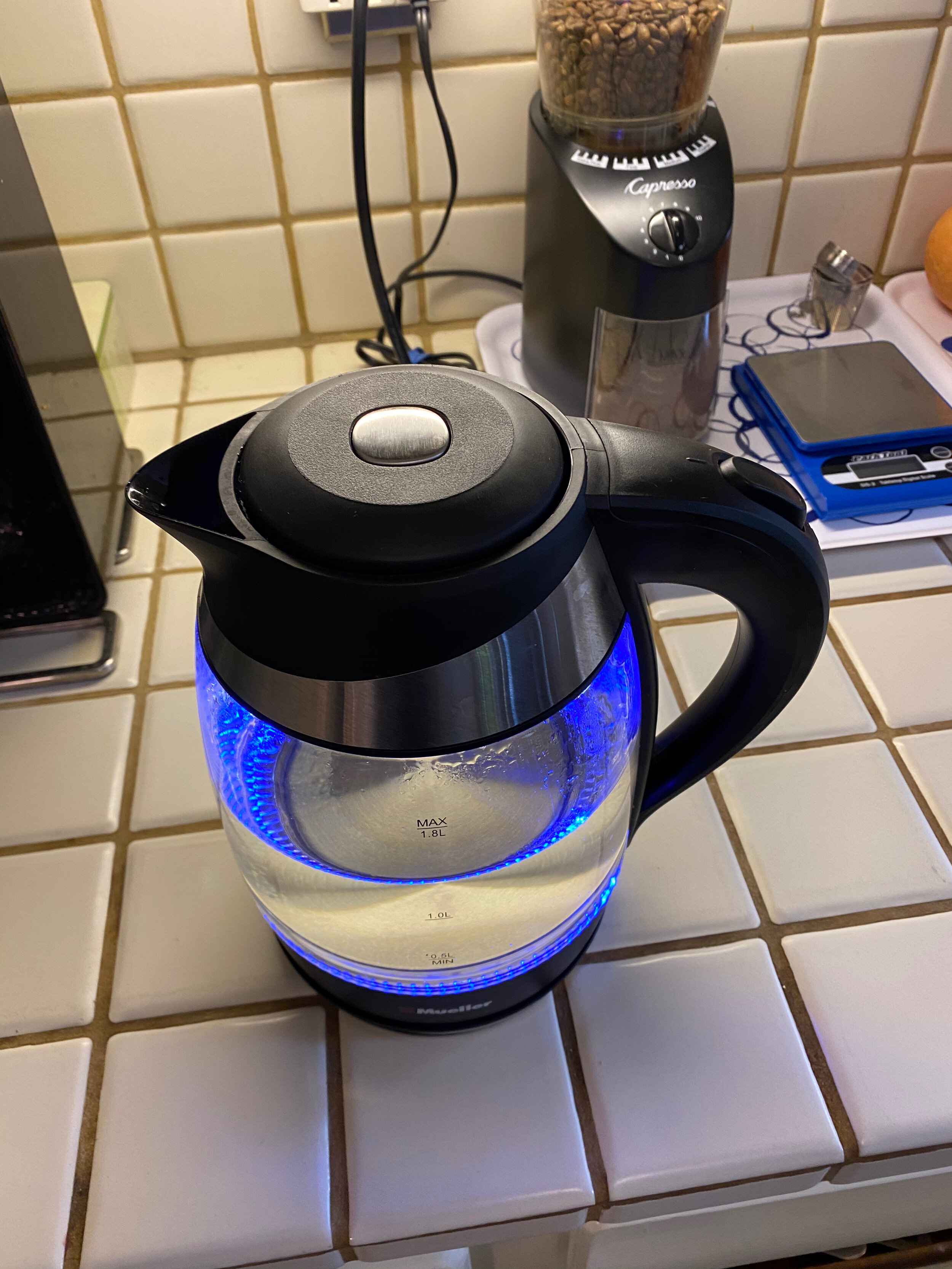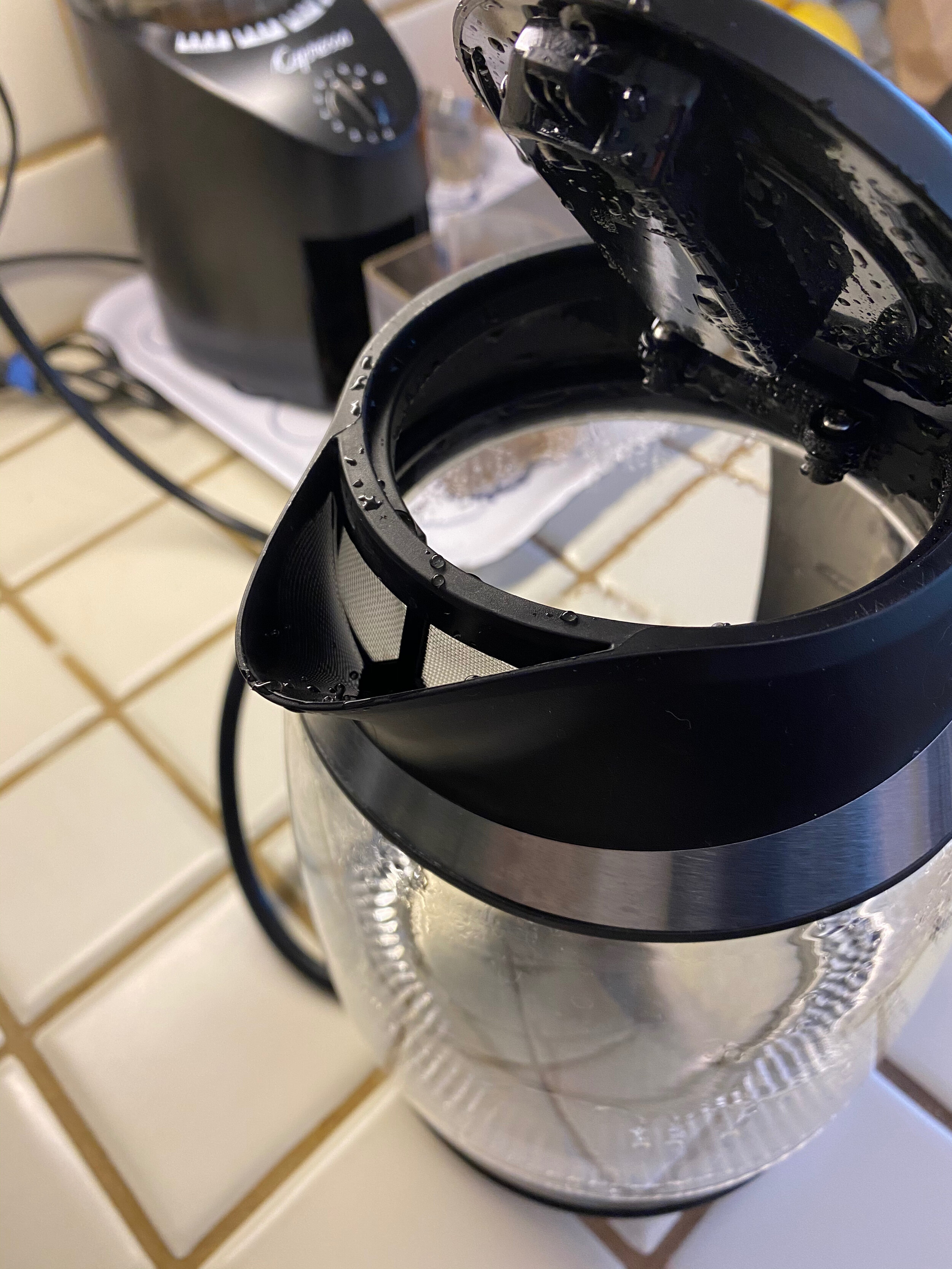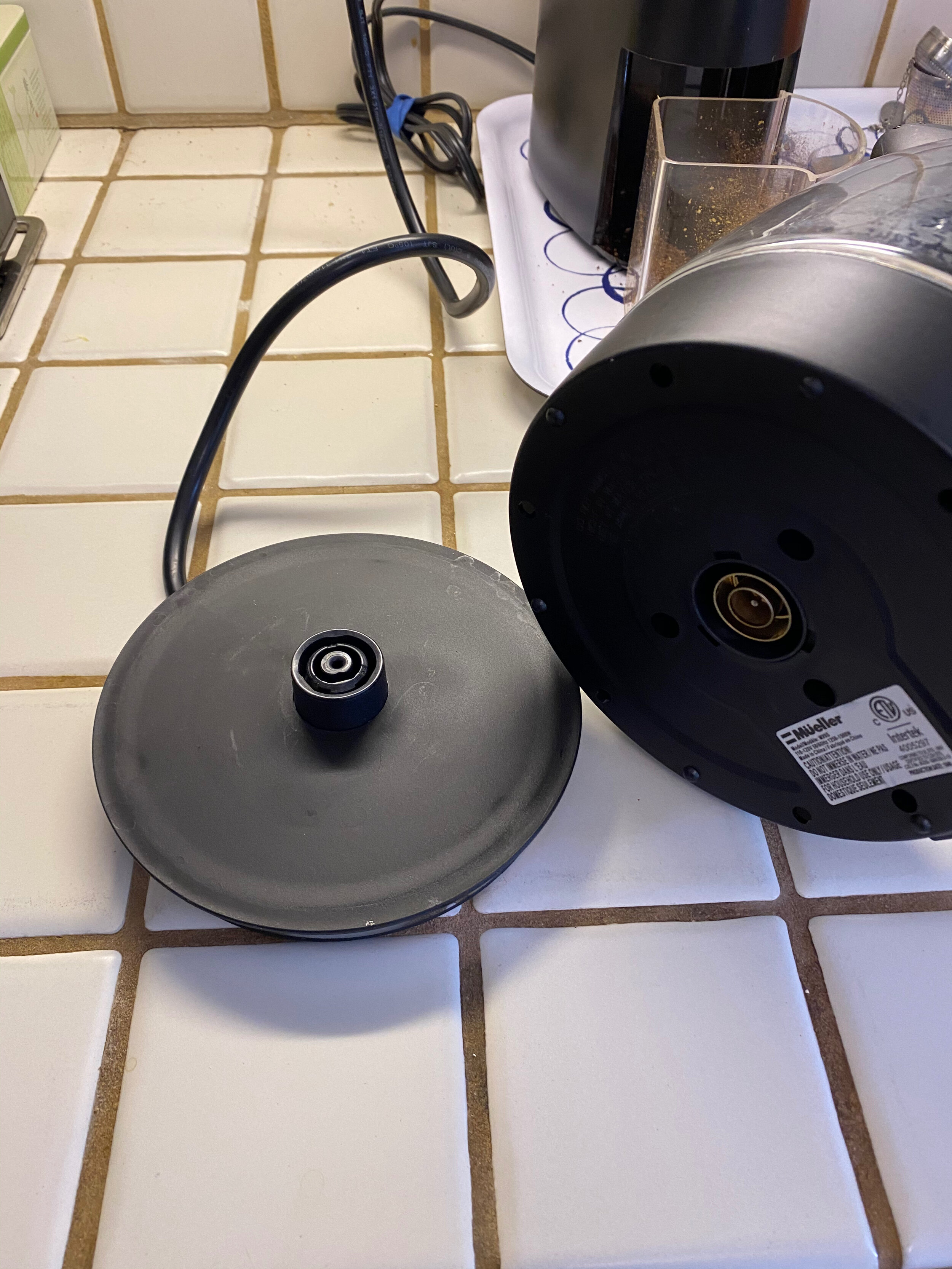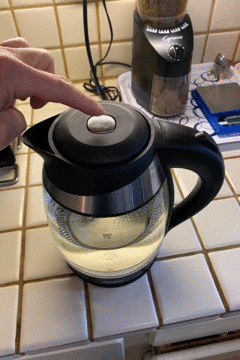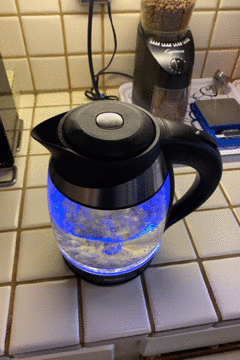Ergonomics Diary 2
Every morning I make a French press pot of coffee and have gone through a number of different devices for boiling water over the years. They eventually short out or lose accuracy in their thermostat and thus need replacement. This latest one is the most simple I’ve had yet: The Müeller Ultra Kettle!
At first glance, it is obvious that this is a vessel that affords holding and pouring liquid water by the evidence of the spout and handle signifiers. Given the base it rests upon and the electric cord to the wall, a quick conceptual model of this device alludes to it being a kettle for boiling water. (Granted, it did not arrive in its box full of water).
The graduated markings on the side of the glass signifies the recommended constraintsof overfilling the kettle.
The interaction of this device begins with filling it with water, the first step to achieve this utilizes what I find a little vague despite the rather prominent signifier of the button on the top:
Perhaps a little indirect, as one of the mapping elements is located underneath the kettle, but through tactile feedback, a user will be able to correctly place the kettle on its base by the circular heating element as it interfaces with a female receiver underneath. If this wasn’t placed correctly, the user would quickly get the feedback of the kettle likely toppling to the counter and not sitting stable on the base. The next step in attaining hot water, after setting the kettle, full of water, correctly on the base, is to press the switch on the handle. The protruding boss on the handle acts as a signifier for the button. This immediately provides the feedbackwith the visible blue light and the click of the switch and auditory rumble of the electric heat being applied to the element.
This is one of the features that is different from previous models of kettle I’ve had. This one features a single simple button. Other versions had a bank of buttons mapped to specific temperatures/drinks (i.e. 195˚/oolong tea). I personally am not that refined of a hot beverage drinker, I just want the water temperature to be hot for making coffee, so like Don Norman talks about on page 59, I have formed a story that the individual temperature settings are merely vaguely different degrees of a rolling boil. This is an outcome I do not need. (This lack of boiling difference was due to the fact the thermostat in that previous model died which ultimately showed me that my conceptual model of those varied buttons was incorrect—I was blaming the wrong thing). The next feedback received is given when the water has reached completion in temperature. The blue light turns off and there is another audible click of the switch releasing back to the off position. At this point another interactive constraint has been put into effect: the heating element also turns off, preventing any accidental over-boiling and steaming off the water and scorching the kettle to the point of ruin.
Adding to this diary entry I sought to directly consider Don Norman’s Fundamental Design Principles listed on page 72 of DOET, this kettle actually seems to satisfy them, take for instance the following:
Discoverability—it is pretty evident immediately what actions are possible: open lid, fill with water, press button to heat water, lift kettle, and pour hot water
Feedback—given the clear glass of the kettle, there is immediate feedback to the volume of liquid contained therein, whence full, and button pressed, the visual feedback of the blue light indicates an action has been executed (water is getting heated); further feedback upon completion is fairly evident as well as the blue light turns off when the water has reached the point of boil
Conceptual Model—the kettle being a common enough kitchen tool provides the concept clearly enough that filling it with liquid and activating the heating element is obvious
Affordances—apart from the initial affordance of holding liquid, (also any liquid for that matter—heating loose leaf tea could also be performed which might also be benefitted by the filter screen at the spout), more simple affordances could be watering houseplants, or awkwardly drinking directly from the kettle all exist
Signifiers—the designers of this kettle made sure to include the obvious signifiers of the button to activate the heating element, as well as the opening mechanism not to overlook the direction of the pour spout being opposite that of the handle (to give a nod to the popular cover of DOET), but also, as mentioned the graduations on the glass to signify volume of liquid
Mappings—the most obvious relationship between controls and their actions related to the spatial layout of the kettle exists between the interface of the electrical heating element on the base and underside of the kettle
Constraints—logical constraints exist with this specific kettle in how it turns off on it’s own to prevent boil dry conditions as well as the potential affordance of heating loose leaf tea where the spout filter screen would physically prevent tea leaves from entering the drinking cup
